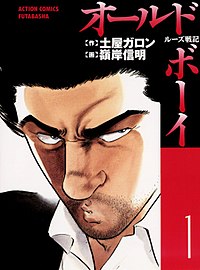
Unlike most of the comic blogs out there, I don't give out ratings (for now). I've found that most rating systems are inconsistent. Hypothetically, think of ratings like a bell curve. So, if I were to rate consistently from * to *****, a solid 68% of my rankings would be **1/4 to ***3/4, 14% would be *1/4 to **, 14% would be **** to ****3/4, 2% would be *, and 2% would be *****. This contrasts with the average Amazon/iTunes reviewer, where 80% of the rankings are *****, 19% of the rankings are *, and 1% of the rankings are *1/4 to ****3/4. And that's assuming that I pick my comic books completely by chance. I don't.
So, should you read a copy of a series I recommend? If you're not sure, see if I continue reading it, for one. I am completely independent. I no longer review much on Amazon because the point of reviewing on Amazon is to get free stuff so you do more reviews. One of the last message-board reviews I did before starting this blog was Tet, Issue #1, a few days ago. I've already read and reviewed Issue #2 and Issue #3, and I'll probably read Issue #4 today or tomorrow. That is the sign of a good series.
 Now, what do I look for in a series? Readability tops my list. This takes a lot of work by the writer, editing and re-editing material so that it naturally flows from page to page. Some writers just have the knack for it; Robert A. Heinlein would publish first drafts of what he wrote on a typewriter. Even Isaac Asimov had to write two drafts. And artwork? Gary Larson of The Far Side showed us that even without terrific art skills, one could make a top-notch comic. In the later stages of HunterXHunter, Yoshihiro Togashi has published only vague outlines of what the final draft should be, a move widely criticized by manga fans around the world. Visually, one of my favorite series is Oldboy. The cityscapes were far ahead of their time, and contrasted with the more iconic nature of the faces of the characters. The series has an unsatisfying conclusion, but I liked the artwork so much that I ended up reading all of it and enjoying it.
Now, what do I look for in a series? Readability tops my list. This takes a lot of work by the writer, editing and re-editing material so that it naturally flows from page to page. Some writers just have the knack for it; Robert A. Heinlein would publish first drafts of what he wrote on a typewriter. Even Isaac Asimov had to write two drafts. And artwork? Gary Larson of The Far Side showed us that even without terrific art skills, one could make a top-notch comic. In the later stages of HunterXHunter, Yoshihiro Togashi has published only vague outlines of what the final draft should be, a move widely criticized by manga fans around the world. Visually, one of my favorite series is Oldboy. The cityscapes were far ahead of their time, and contrasted with the more iconic nature of the faces of the characters. The series has an unsatisfying conclusion, but I liked the artwork so much that I ended up reading all of it and enjoying it.
Comics are uniquely suited to translation, and I read a lot of comics from around the world. Dialogue translates more easily than description, as the latter is more strongly based in words specific to a country or region. I'm one of the few who tried reading Thomas Mann's Doctor Faustus in English, and gave up halfway through. It just isn't suited for reading in English. Comics, which are all dialogue (including inner), don't have this problem.
Any way, I look forward to introducing you to some of my favorites.
No comments:
Post a Comment